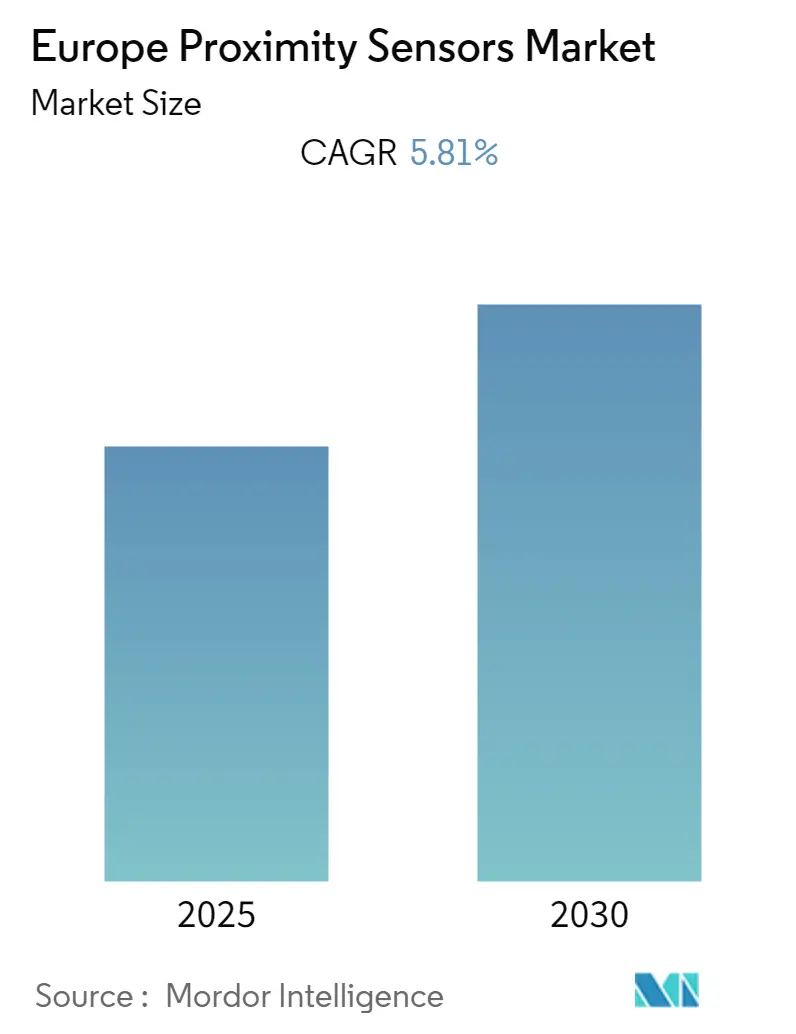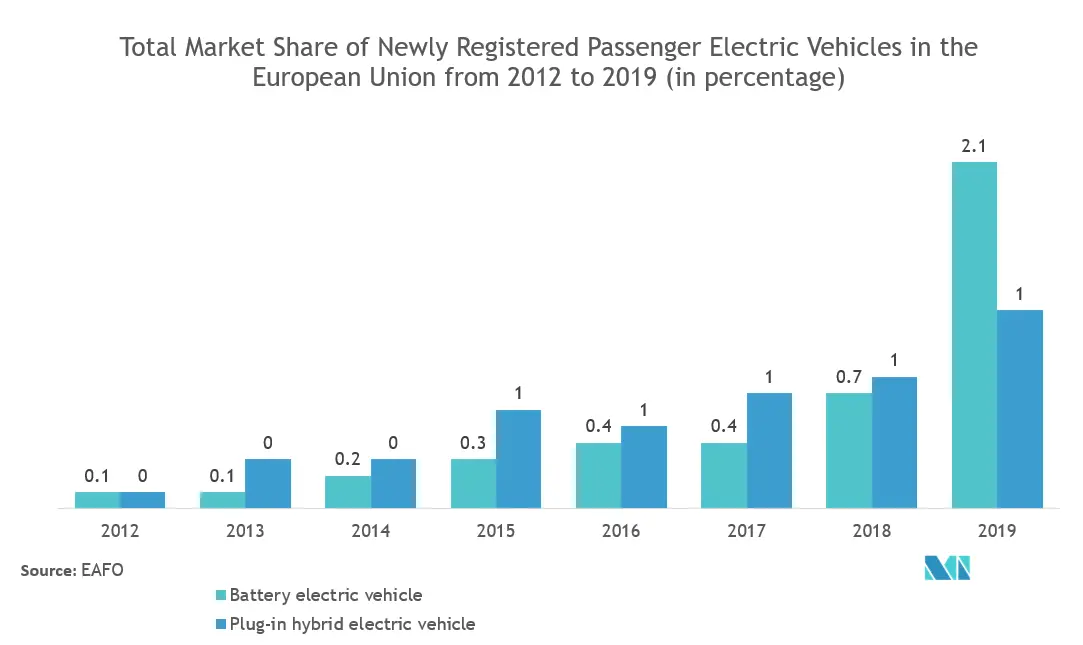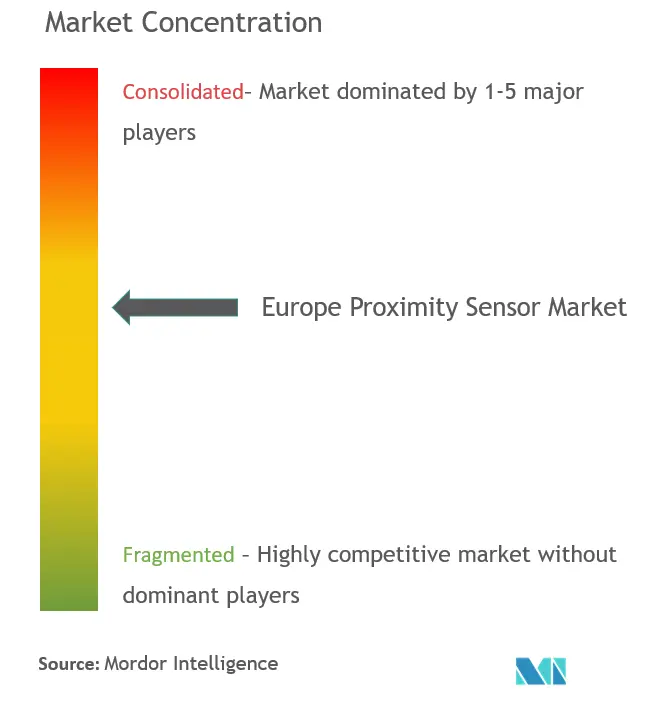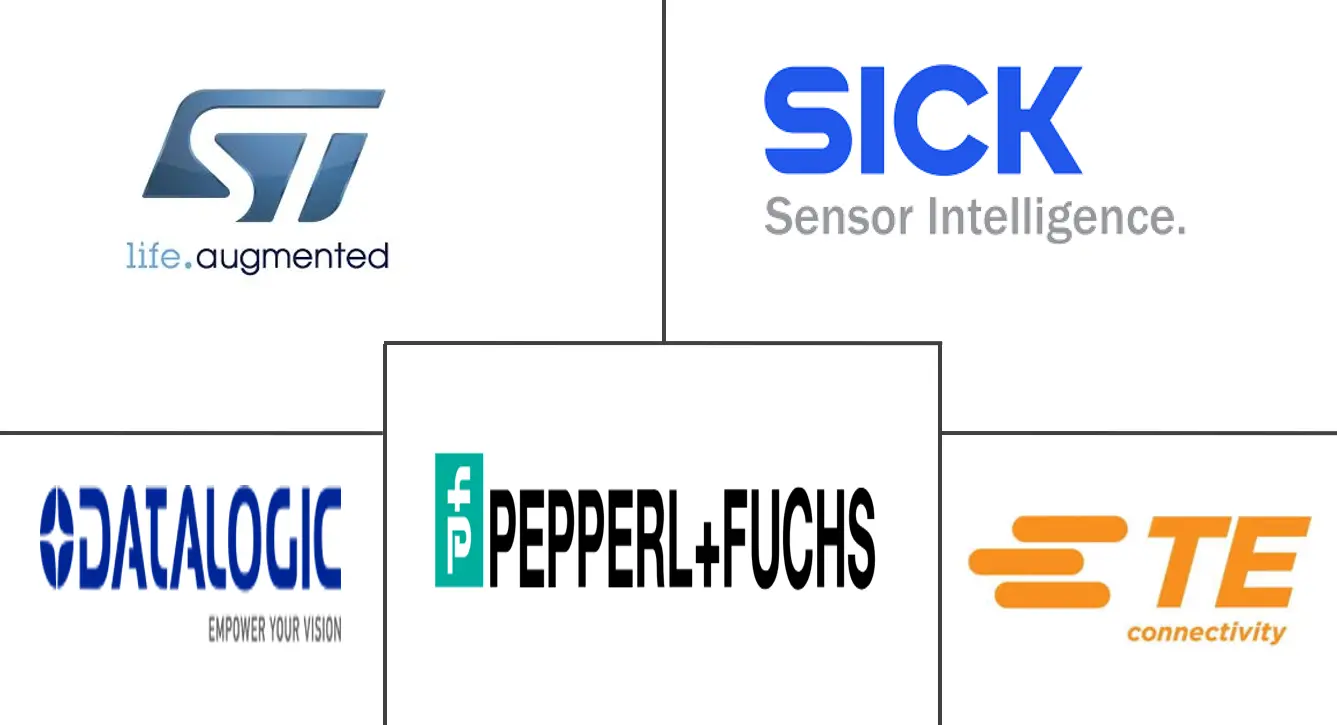
Europe Proximity Sensors Market Analysis by Mordor Intelligence
The Europe Proximity Sensors Market is expected to register a CAGR of 5.81% during the forecast period.
- The ability of proximity sensors to work in hazardous conditions, such as extreme humidity and temperature, as well as in chemical processing applications, aided the growth of the proximity sensors market. For instance, SICK AG offers Inductive Proximity sensors, which are used in almost every area of factory and logistics automation. From cylindrical and rectangular standard sensors to special sensors for explosive zones and harsh environments, these sensors provide an intelligent, reliable route in implementing industry-specific and customized solutions to any automation scheme.
- The increasing cost of labor, combined with the immense pressure on manufacturers to meet the deadlines, has resulted in an increase of automation in factories across Europe. The rising number of warehouses and increasing investments in warehouse automation, coupled with the rise in labor costs and availability of scalable technological solutions in Europe, have been driving the market for warehouse robots across the European countries and demand for proximity sensors.
- For instance, in September 2019, ThyssenKrupp Materials Services, the distribution and service provider of the ThyssenKrupp Group, revealed its plan the to invest EUR 70 million to modernize the existing a state-of-the-art logistics center and expand by new warehouses in Germany, Poland and Hungary.
- Moreover, adoption of home automation and consumer convenience devices such as smart thermostats, smart light bulbs, smart security cameras, smart air conditioners, smart door locks, smart plugs, smart speakers, etc., are driving the demand for smart sensing technologies which utilize proximity sensors. As homes are becoming dependent on smart technologies, smart appliances with non-contact sensing technologies may be favored to support future smart home infrastructure. For instance, Philips's smart bulbs for indoor and outdoor lighting uses proximity sensor.
Europe Proximity Sensors Market Trends and Insights
Increasing Investment in Automotive Sector is Expected to Drive the Market
- The adoption of proximity sensors in automotive and consumer electronics, among others, is boosting the market’s growth in European countries. According to the Society of Motor Manufacturers and Traders (SMMT), the UK automotive industry is a vital part of the UK economy worth more than EUR 82 billion turnovers and adding EUR 18.6 billion value to the UK economy. Additionally, the UK produced roughly 1.3 million passenger cars in 2019.
- The autonomous driving method relies on proximity sensors which enables it to analyst the object at a variety of distances. Sensors not only help to determine the actual environment and the present dangers but also aid the vehicle to provide an appropriate response. These responses can range from accelerating or decelerating to turning, emergency stop, and evasive maneuverers.
- Hybrid vehicles and electric vehicles are expected to lead the growth of the automotive industry in European countries with companies focusing on electric vehicle technologies. Moreover, the adoption of plug-in electric vehicles is supported by many governments. For instance, in order to increase the number of electric vehicles (EV) on Germany’s roads, the federal government has planned to bring out a directive that halves the monthly rate on EVs and hybrid company cars.
- Dutch government has invested around EUR 1 billion (USD 1.4 billion) to the research and development of electric vehicles, with the ultimate goal of adding one million electric cars to the nation's streets by 2020.
- Further, UK government has also funded GBP 100 million to UK Connected Intelligence Transport Environment (UK CITE), a project to create an advanced environment for testing autonomous and connected vehicles, which include technologies such as emergency vehicle warning (EVW), road works warning (RWW), emergency electronic brake light (EEBL) and traffic condition warning (TCW). These trends will further drive the adoption of electric vehicles, thus impacting the proximity sensors market.

Technological Advancement in Aerospace and Defense Sector is Expected to Drive the Market
- The aerospace and defense sector is one of the largest adopters of proximity sensors, owing to the need for safety-critical, safety-related, or high-reliability solutions. According to Honeywell International Inc., proximity sensors can detect most internal failures and display a fault output to a pilot or maintenance technician, thereby reducing downtime and maintenance costs. For instance, proximity sensors in aircraft landing gear systems offer the pilot with a fault alert on landing approach to warn if the landing gear is not completely deployed.
- The aerospace sector is rising as the most high-tech sector in Europe. The European Aeronautic industry is a multifaceted industry involved in the development and manufacturing of a wide range of products, such as aero engines, unmanned aerial vehicles, helicopters, military, and civil aircraft, systems, and equipment. The growing number of foreign investors within the aerospace sector specifically in R&D to maintain global competitiveness is also expected to drive the market.
- The United Kingdom government committed to invest up to GBP 125 million to develop new technologies such as drones and urban air vehicles and also it promised to invest GBP 2 million n over six years to develop next generation fighter jet is expected drive the studied market.
- With the growing demand for proximity sensors, companies are increasingly investing in the market. For instance, Honeywell launched self-diagnosing sensors to improve the performance of aircraft systems and reduce maintenance costs associated with false readings. The company offers the Integral Health Monitoring (IHM) series proximity sensors that can detect when a sensor has been damaged or otherwise impacted.

Competitive Landscape
The Europe proximity sensor market is concentrated due to higher initial investments. It is dominated by a few major players like Sick AG, STMicroelectronics NV, Datalogic SpA, Pepperl+Fuchs GmbH, and TE Connectivity Ltd. These significant players, with a prominent share in the market, are focusing on expanding their customer base across foreign countries. These companies are leveraging strategic collaborative initiatives to increase their market share and increase their profitability. However, with technological advancements and product innovations, mid-size to smaller companies are growing their market presence by securing new contracts and tapping new markets.
- July 2020 - STMicroelectronics is enabling social distancing through its high-accuracy FlightSense proximity and ranging sensors and helping prevent disease transmission in the global pandemic situation. The sensors can also help users avoid contact with surfaces, including self-service touchscreens, smart faucets, and push-button door openers, located in high-traffic areas. The speed and precision of ToF sensing enable FlightSense sensors to manage basic on or off control as well as to detect and interpret gestures like tapping and swiping for smart touchless human-machine interaction.
- March 2020 - TE Connectivity Ltd. has completed its public takeover of First Sensor AG. TE now holds 71.87% shares of First Sensor. Through this acquisition, TE connectivity will be able to offer a broader product base, including innovative, market-leading sensors, connectors and systems plus best-in-class capabilities, that supports the growth strategy of TE's sensors business and TE Connectivity as a whole.
Europe Proximity Sensors Industry Leaders
-
Sick AG
-
STMicroelectronics NV
-
Datalogic SpA
-
Pepperl+Fuchs GmbH
-
TE Connectivity Ltd.
- *Disclaimer: Major Players sorted in no particular order

Europe Proximity Sensors Market Report Scope
A proximity sensor is a sensor that is able to detect the presence of nearby objects without any physical contact. For sensing objects, this sensor radiates or emits a beam of electromagnetic radiation, usually in the form of infrared light, and detects the reflection to determine the object's proximity or distance from the sensor. A proximity sensor often emits an electromagnetic field or a beam of electromagnetic radiation (for instance, infrared) and detects changes in the field or return signal.
| Inductive |
| Capacitive |
| Photoelectric |
| Magnetic |
| Aerospace and Defense |
| Automotive |
| Industrial |
| Consumer Electronics |
| Food and Beverage |
| Other End-user Verticals |
| Germany |
| United Kingdom |
| France |
| Italy |
| Rest of Europe |
| Technology | Inductive |
| Capacitive | |
| Photoelectric | |
| Magnetic | |
| End-User | Aerospace and Defense |
| Automotive | |
| Industrial | |
| Consumer Electronics | |
| Food and Beverage | |
| Other End-user Verticals | |
| Country | Germany |
| United Kingdom | |
| France | |
| Italy | |
| Rest of Europe |
Key Questions Answered in the Report
What is the current Europe Proximity Sensors Market size?
The Europe Proximity Sensors Market is projected to register a CAGR of 5.81% during the forecast period (2025-2030)
Who are the key players in Europe Proximity Sensors Market?
Sick AG, STMicroelectronics NV, Datalogic SpA, Pepperl+Fuchs GmbH and TE Connectivity Ltd. are the major companies operating in the Europe Proximity Sensors Market.
What years does this Europe Proximity Sensors Market cover?
The report covers the Europe Proximity Sensors Market historical market size for years: 2019, 2020, 2021, 2022, 2023 and 2024. The report also forecasts the Europe Proximity Sensors Market size for years: 2025, 2026, 2027, 2028, 2029 and 2030.
Page last updated on:
Europe Proximity Sensors Market Report
Statistics for the 2025 Europe Proximity Sensors market share, size and revenue growth rate, created by Mordor Intelligence™ Industry Reports. Europe Proximity Sensors analysis includes a market forecast outlook for 2025 to 2030 and historical overview. Get a sample of this industry analysis as a free report PDF download.



